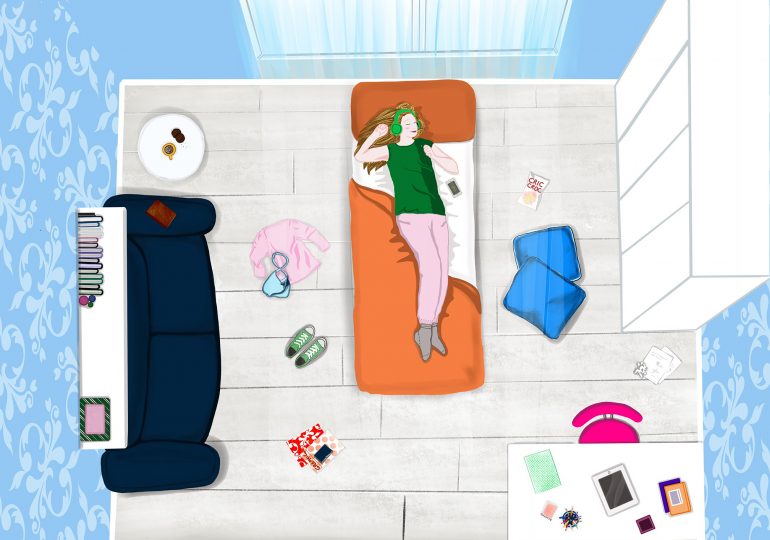There’s a lot of fear around spending time alone. Alone time can make people itchy with boredom. It can carry a stigma (especially if you’re single). Worse, recent articles and studies warn us about the dangers of loneliness—one 2017 study by Julianne Holt-Lunstad at BYU’s Social Connection & Health Lab claims claims loneliness is as bad as smoking fifteen cigarettes a day. In 2023, the U.S. Surgeon General Vivek Murthy published an advisory all about the epidemic of loneliness in America. It details the genuine risks of chronic loneliness, such as increased risks of anxiety and depression, as well as dementia in older adults.
[time-brightcove not-tgx=”true”]
The message? Loneliness isn’t just bad for you; it’s a killer.
But while it is a serious health problem, what gets lost in these conversations is that not all alone time is the same. There’s chronic loneliness—and there’s solitude. One is a dangerous epidemic. The other is a skill we must nurture.
What is chronic loneliness? It occurs when there is unhappiness about a lack of companionship or a perceived sense of social isolation. Being physically alone isn’t the only way to feel lonely. A person can feel lonely while a partner is disrespecting them. Or being surrounded by a group of people where they feel like an outsider.
Yet not all loneliness is a health issue. As the Surgeon General advisory notes, the “transient feelings of loneliness may be less problematic, or even adaptative [than chronic loneliness].”
That’s a helpful distinction.
Being alone is when you happen to be by yourself. We do so many activities alone that don’t come with the stigmas or dangers of chronic loneliness—reading a book, doing an art project, cooking a meal, or running errands. This kind of alone time is healing and important. Solitude is a neutral-to-positive state of being free of the demands of others. While chronic loneliness threatens our health, solitude can be the opposite. Even just 15 minutes of solitude can help you regulate your emotions. Solitude also provides the space for creative thinking to happen. Finding time for solitude can help you gain deeper self-knowledge.
Read More: 5 Times When Being Alone Will Improve Your Life
Yet we don’t know how to embrace it, and we often run from it. We stay in bad relationships so to not be alone. We surround ourselves with friends and go to parties when our energy is depleted. We have trouble sitting still with ourselves. We don’t see a path from bad loneliness to good loneliness.
This isn’t surprising. One of the main factors of chronic loneliness—the kind with serious health implications—is social isolation. According to the late professor and researcher John Cacioppo of the University of Chicago, loneliness is a biological signal akin to hunger or thirst. When we are in a state of painful loneliness, it is our bodies giving us information to find social support or do reparative work on our social ties.
Yet being more in touch with our loneliness sensors help us use the healthy version of alone time. You wouldn’t be ashamed of needing water when thirsty, so why should you feel bad about feeling lonely? What’s more, we might have more control over how connected we feel with others than we think. Yale psychologist and research scientist Emma Seppälä’s found that “a sense of connection is internal.” Meaning, if you can feel connected with loved ones even when you’re not around them, you can still feel socially connected. Seppälä’s work has found people can boost this internal sense of connection by volunteering, taking care of yourself, and reaching out for help when you do feel lonely.
I am a believer in finding your best solitude style. For instance, I love going to a movie alone and have never felt uncomfortable doing it. You’re in a dark room facing a screen, not talking with people. In my opinion, it is the perfect solo activity for any time. However, according to research by Rebecca Ratner, a marketing professor at the University of Maryland’s Robert H. Smith School of Business, people often avoid activities they enjoy if they have to do them alone, mainly if they are observed doing them in public.
Ratner also found that people tend to underestimate how much they will enjoy a solo activity. I encourage those of you who don’t like being alone in public, or are even uncomfortable doing it in private, to try it out once. You may just find yourself seeking it out again and again. Dining out alone can inspire its own romanticism. Bringing a book to a coffee shop is a gift. Taking a solo hike in the woods allows you to observe things more closely than you’d ever done when hiking with a companion.
I now actively create solitude projects. During the pandemic, I missed going to the movies. Unable to go to my favorite local theater, I couldn’t recreate that experience, so I made up a little challenge to watch as many movie trilogies as possible. I dove into the Richard Linklater Before films, the Back to the Future trilogy, the Matrix movies, and more. This self-assigned project got me caught up on movies that had been on my to-watch list, but it also helped solve the question of “what the hell am I going to do with all this alone time?”
Staying committed to a creative project is a beautiful solitude style. So are activities that make you feel connected with others—like writing letters to a loved one or even practicing a lovingkindness meditation.
Solitude is like any other social interaction. Sometimes brunch out with friends is all laughs and the energy is just right. But other times someone complains a little too much about their job or their ex and the vibe is off.
But when you carve out delicious moments for just you—taking yourself shopping, hiking, roller-skating, whatever it is—you get to be the sole architect of your experience. There can be a certain air of romance to the time you give yourself.
Leave a comment








